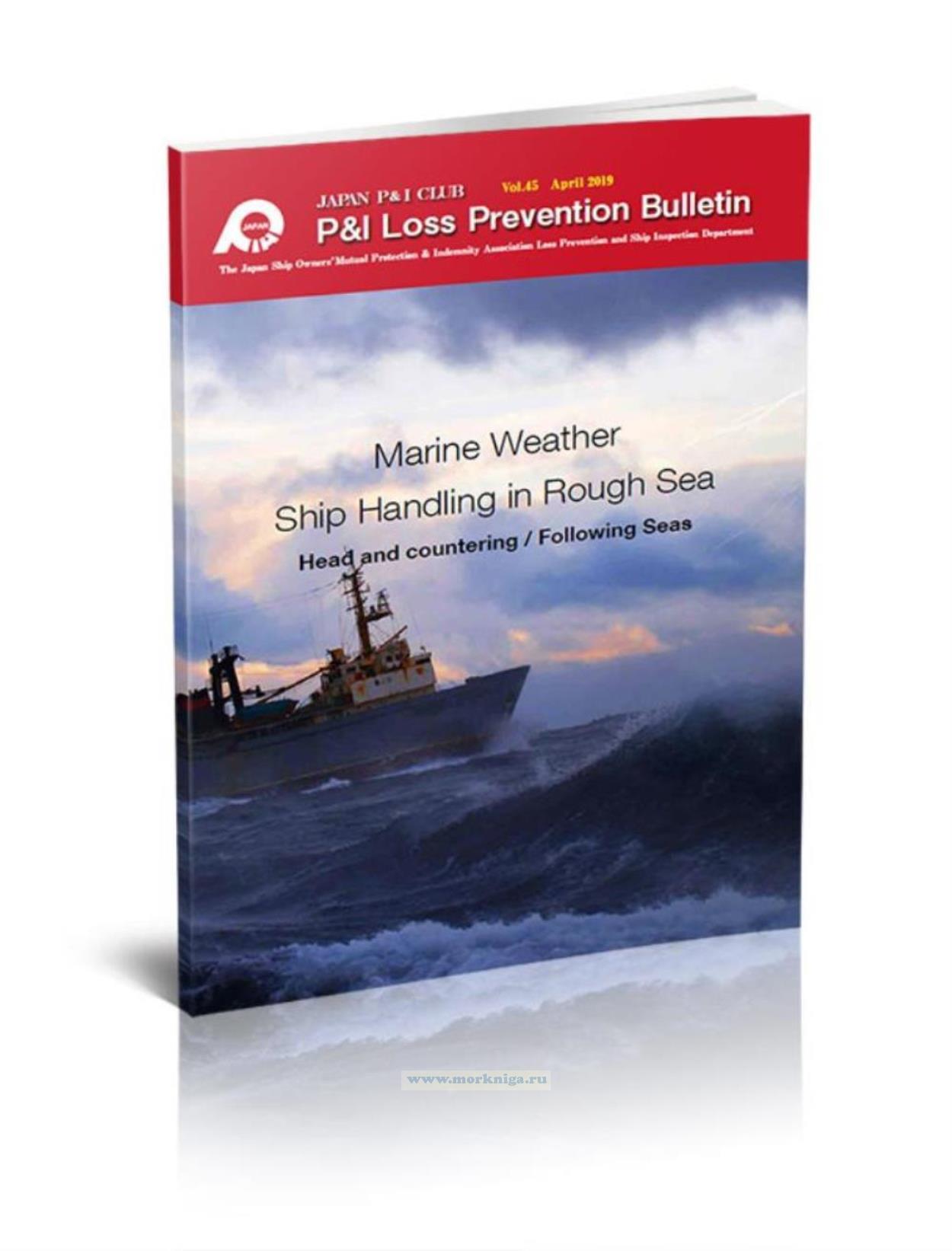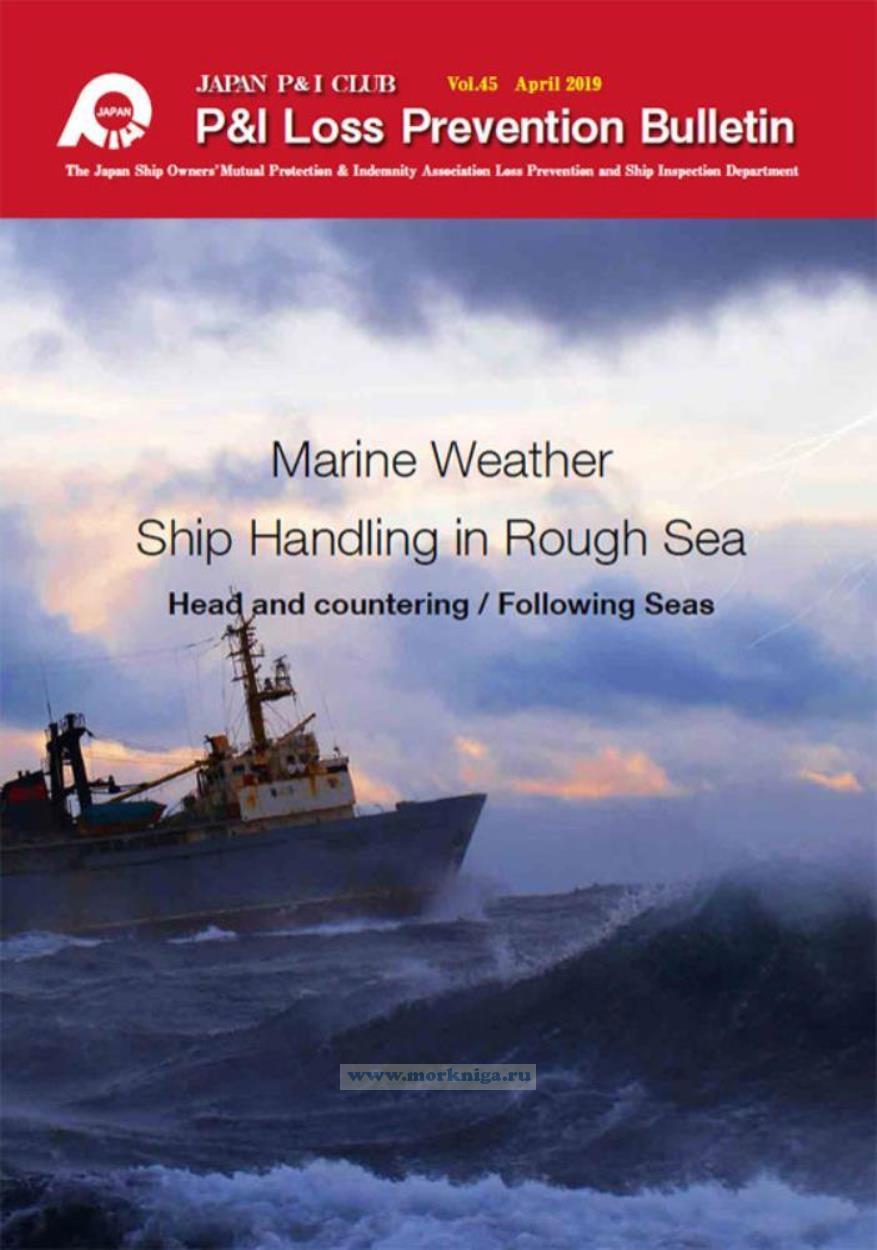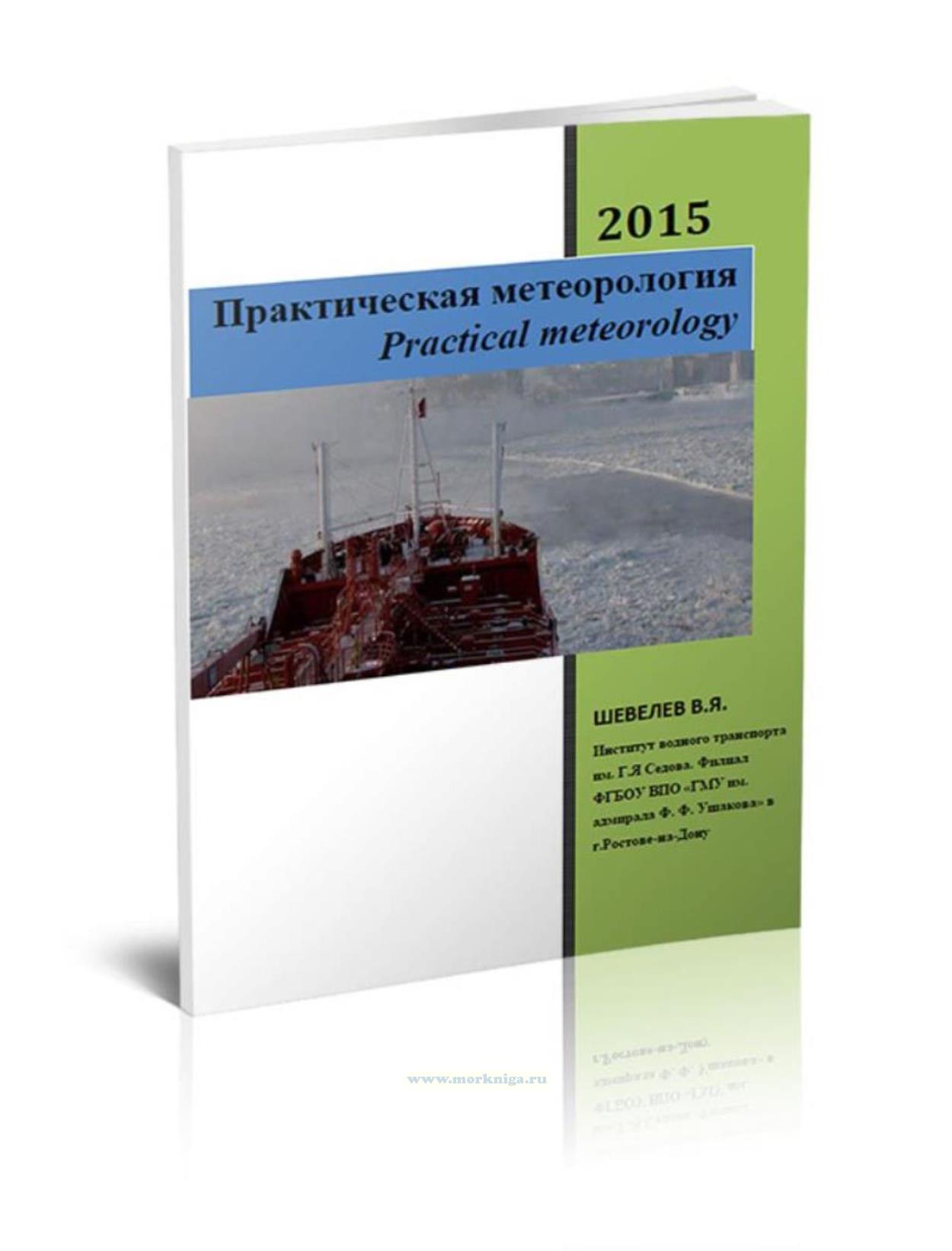Loss Prevention Bulletin. Marine Weather. Ship Handling in Rough Sea/Бюллетень по предотвращению потерь. Морская Погода. Обслуживание судов во время шторма
Издание на английском языке
In 4-1-4, based on his own experiences, the author introduced how to choose an appropriate route when navigating the North Pacific Ocean en route North America to Japan during the winter season. In anticipation of operating a ship in areas of rough weather, such as head and countering or following seas, the Master is duty-bound to: obtain as much information as possible on weather and sea conditions, select the most suitable sea route while taking into account the ETA, be aware of the amount of fuel being consumed and possible cargo damage that can occur as a result of rough weather. The charterer will demand that a tight schedule and minimized amount of fuel usage be adhered to in order to improve profitability of the vessel.
Needless to say, the final choice of route lies with the Master and the safety of his vessel.
With this in mind, all information between the charterer, the shipowner, the ship management company and the WRS (Weather Routing Service) provider must be shared. However, first and foremost, it is necessary to set the course with the agreement of those concerned and the Master - who stands on the front line of ship handling, whose opinions and intentions are to be well valued - before departing the port and before the ship is exposed to rough sea.
Although the precise prediction of weather and sea conditions has improved over the recent years, it is still not 100% guaranteed. Naturally, although one may choose a route with a detour, there may be a situation whereby a shorter voyage was not taken due to a misinformed rough sea forecast. The author also experienced occasions whereby weather and sea conditions fell outside of his prediction in the winter season of the North Pacific Ocean, especially when navigating en route from North America to Japan. However, this came about as a result of weather and sea conditions which are difficult to forecast in advance correctly.
Therefore, through the cooperation and understanding of all concerned parties including the charterers/operators, shipowners and ship management companies it should be understood that external and unpredictable phenomena that are beyond the control of the seafarer are existent and that those seafarers should not be held singularly accountable as an afterthought.
Contents
§1 Introduction
§2 Global Circulation of the Atmosphere
§3 Air Mass
§4 Tropical Cyclones
4-1 Extra-tropical Cyclones
4-2 Tropical Cyclones and Typhoons
§5 How to Obtain Weather Information
5-1 Surface Weather Charts
5-2 Wave Charts
5-3 Upper-air Weather Charts (Upper-air Charts?
§6 Wind and Waves and Undulations (Swells)
6-1 Basic Form of a Wave
6-2 Differences between Wind and Waves and Undulations (Swells)
§7 Ship Handling in Rough Sea: Head and countering / Following Seas
7-1 Ship Handling in Head and Countering Seas
7-2 Ship Handling in Following Seas of Rough Weather
§8 Conclusion
References
Attachment: MSC.1/Circ. 1228 (11 January 2007)


 Практическая метеорология
Практическая метеорология